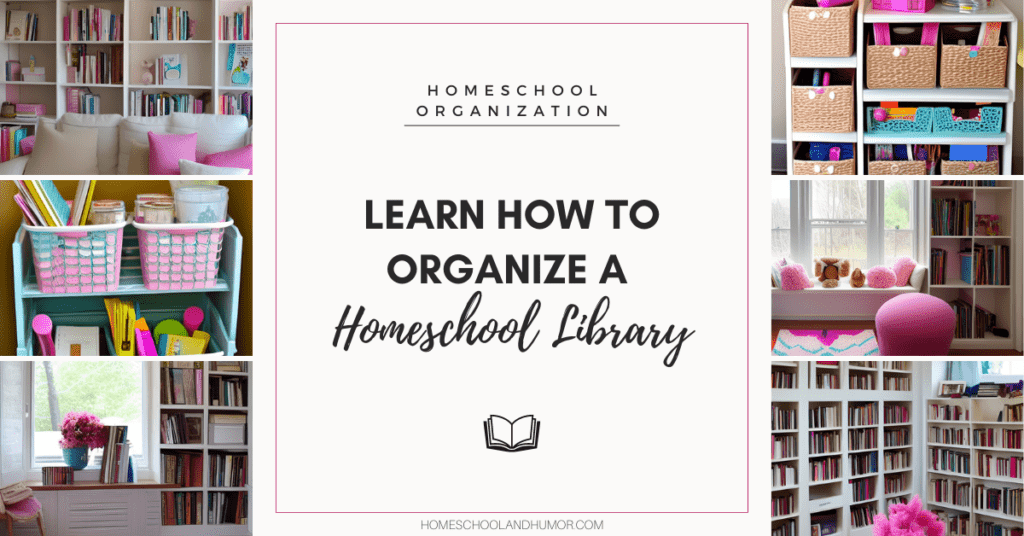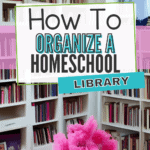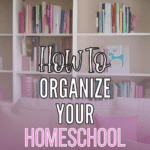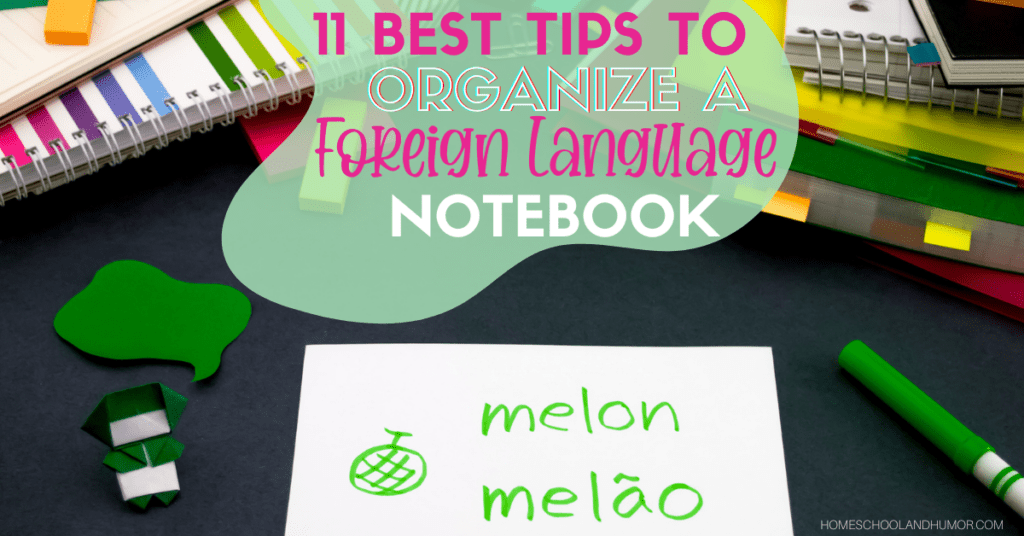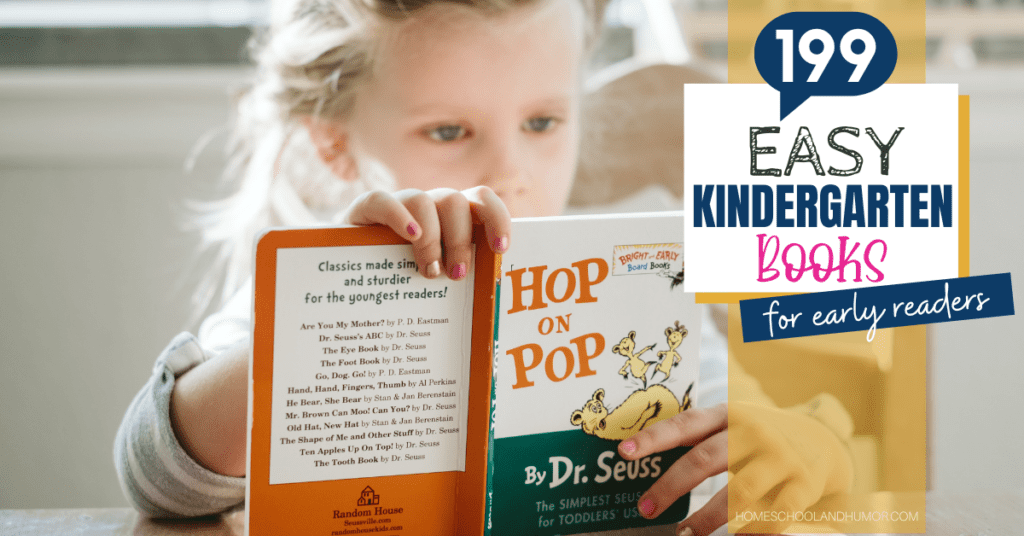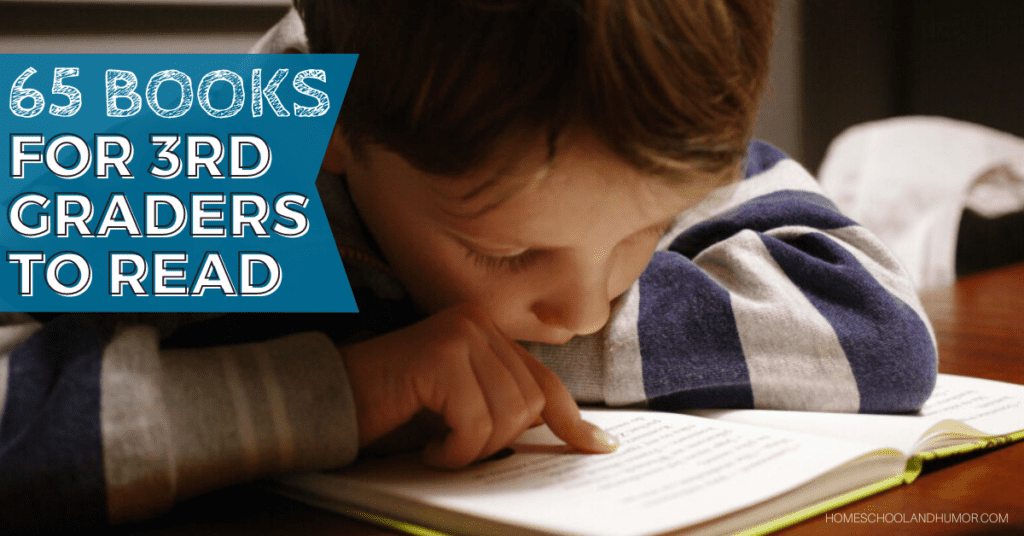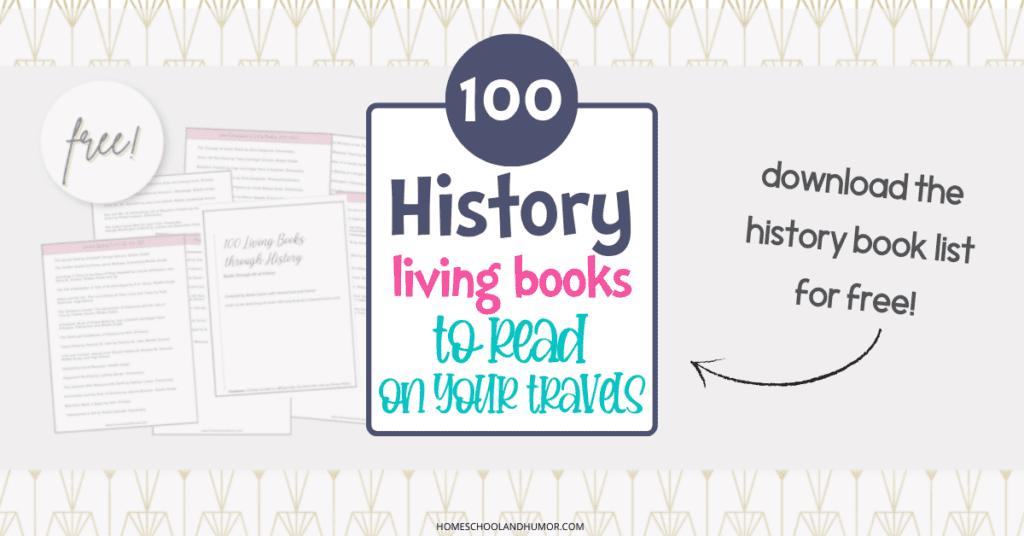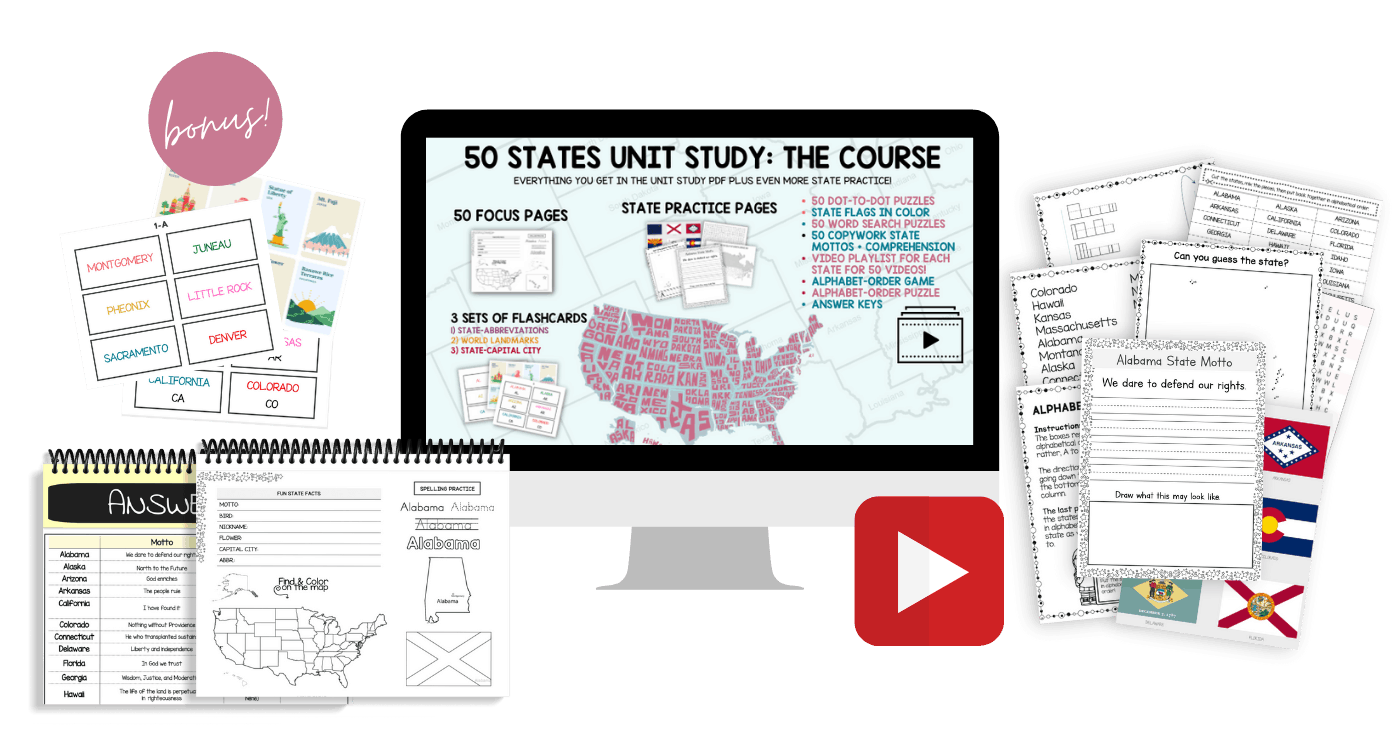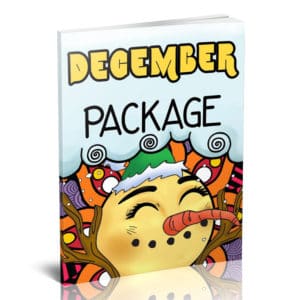
Being a homeschool mom is pretty nice. We can care for our kids at home, and we can work wonders in their lives! Before, I was chained to an alarm clock to hustle all of us out of the house to go to my full-time job. But now? It’s a dream!
Everything except…the mess. If you’re anything like me, you’ve been acquiring textbooks and workbooks and notebooks galore for both homeschooling as well as your own personal library. Chaos can accrue way too quickly. Usually by the end of day 1 of a new homeschool year. this is why it is SO important to learn how to organize a homeschool library for your sanity’s sake and for easier homeschool management.
What about you? Is your home library in need of a little organization? It makes life truly nice when you have a well-organized home library so that you can easily find the resources you need. Here are some tips to help you get started, along with a few homeschool organization ideas!
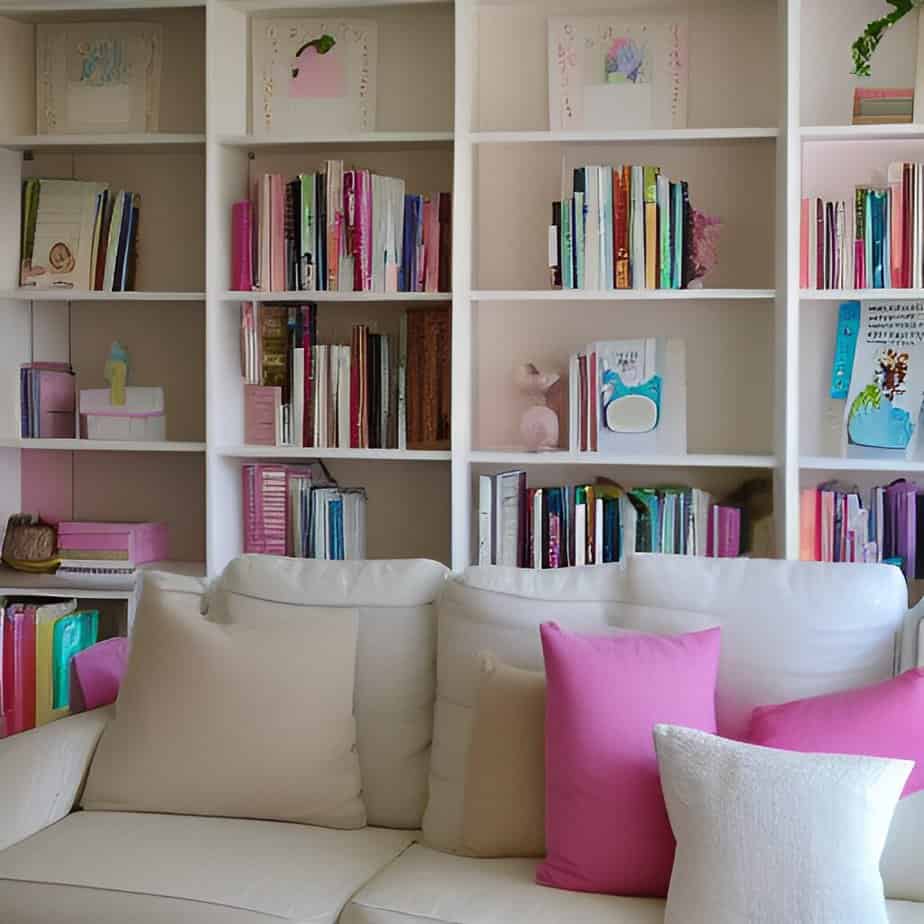
Disclaimer: You might find affiliate links within this post for your convenience.
Quick Navigation
10 Easy Steps Towards Homeschool Library Organization!
Just like with everything else, you have to prep your project a second before you jump in. You need to have some kind of roadmap or plan so you don’t waste time and get scatter-brained. Guilty and guilty.
1. Create a plan.
Before you start organizing, it’s important to have a plan. Decide how you want to organize your library, and then create a list of all the materials you need to put away. This will help you stay on track and avoid getting overwhelmed.
2. Decide what you’re keeping and what you’re getting rid of.
Now, it’s time to make some decisions. As with when you purge clothes and toys, you need to do the same with your old books. Books you know you’ll never open again. Or books that are nice to have but you haven’t touched the past 3 years and probably won’t touch for the next 3 more.

Do you really need all of these textbooks? If not, get rid of them! Donate them to a local library or sell them online. Post them for free or for sale in Facebook Groups. Trust me, homeschooling can get expensiv and you’ll be doing your fellow homeschool mama a wonderful, considerate service by passing these on to her.
Get rid of anything you haven’t touched in the 1-3 years.
3. Find a place for everything.
Now it’s time to find homes for all of your books, the epicenter of homeschool library organization! If you have shelves in your home that can be dedicated to your home library, great! If not, look for other storage options like baskets or bins that can be stored in a closet or under a bed.
Use bins, baskets, or boxes to store materials. Utilize these storage containers. Storage containers are an easy way to keep your home library organized. This will help you keep everything in one place and make it easy to find what you need. And access!
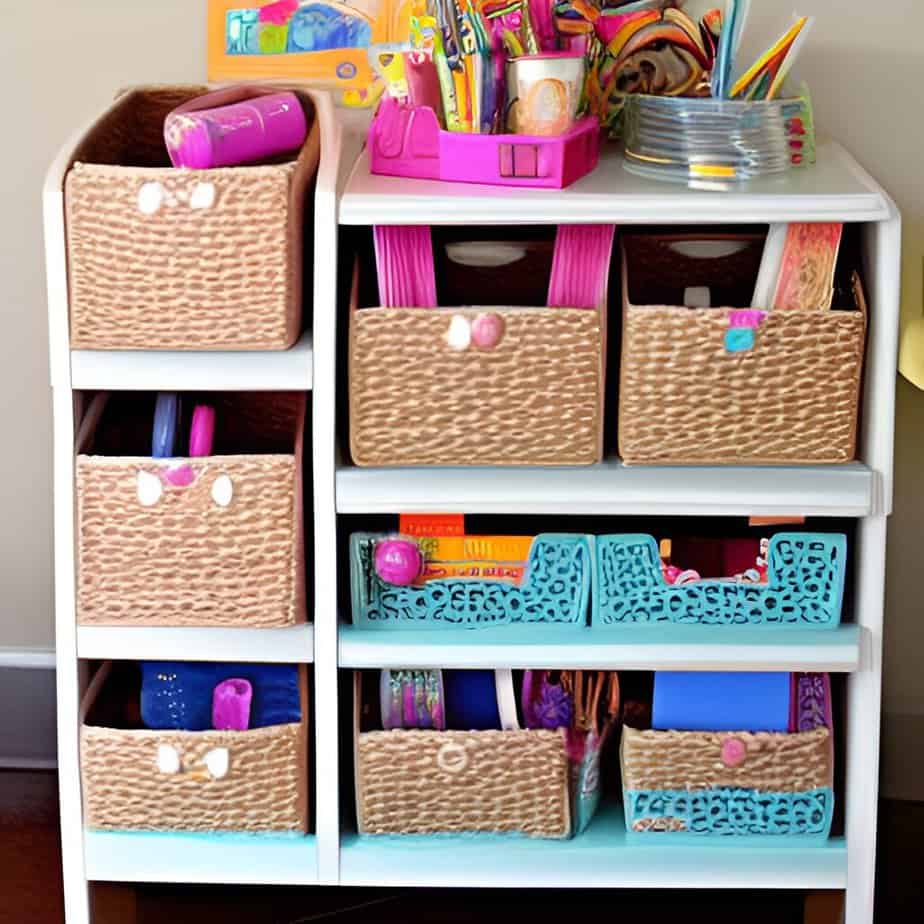
And you’ll likely have textbooks that you won’t be using this year but you do want to hang onto for whatever reason – for upcoming kiddo, for reference during a certain point in a lesson, etc. With these textbooks and books, you’ll want to find those big plastic bins. And know where you’re going to store them.
We’re seeking SIMPLE ACCESS and easy as pie homeschool organizational ideas to manage your home library and homeschool here.
You will want to have a place to put all of the textbooks once they are organized. Storage bins or boxes are a great option, as they can be easily labeled and stacked.
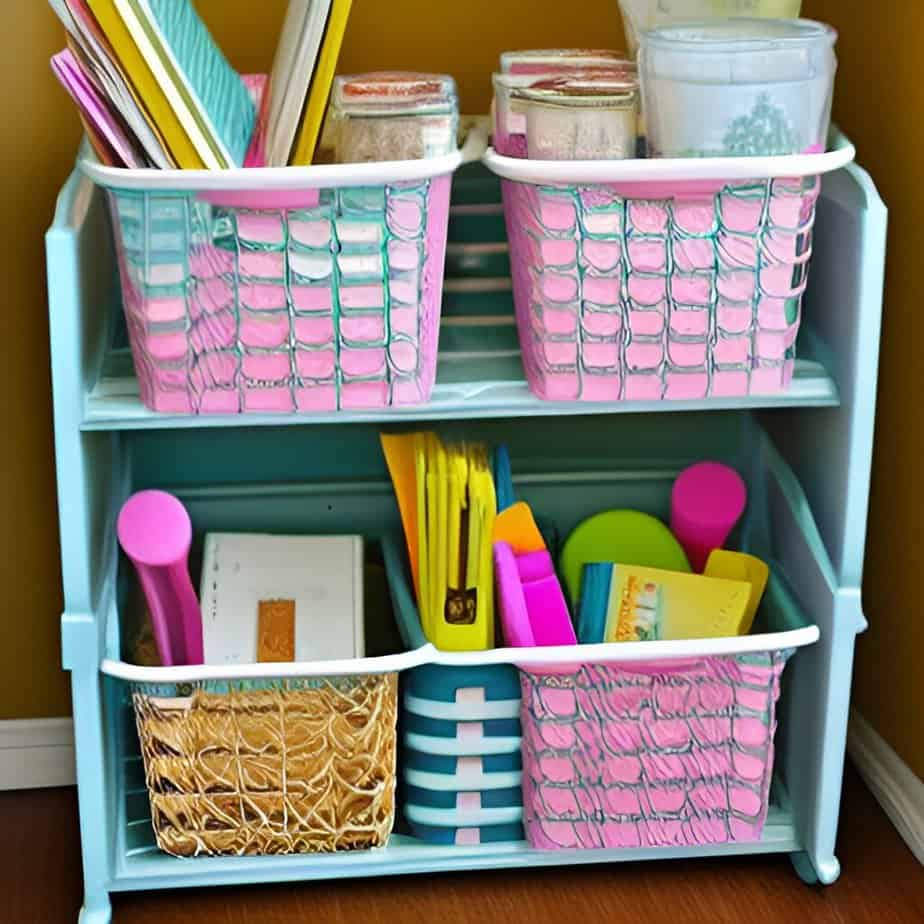
Once you know where your books will be housed and organized, you’ll start sorting your textbooks and books according to an easy system to follow and catalog.
4. Catalog everything To Keep Track of Inventory
This is key. You need to know what you have. You can make a catalog of all the books you have or you can make a catalog of all the curriculums you have on hand.
For example, you write down all the books you have that you like to read yourself, like faith books. Then you can write down each individual book you also have, regardless of what curriculum it belongs to.
Or you can write down all the books you read, like again your faith books. And then write down all the individual curriculums you own that will include the books.
Make a list on a piece of paper or a spreadsheet of all the resources you have on hand. Include the title, author, the suggested grade level, and possibly the publisher for each one. You might even want to add one more column named “Additional Resources” if they have additional resources that go along with the book or curriculum, like another book, a workbook, CDs, DVDs, online access, box of materials, and so on.

Then, make a list of all the other types of books you have in your home library that you’re going to keep. Nothing fancy. Just a simple list will do. You’ll know how to categorize them in the next step.
Some digital tools you can use to organize your resources
- You can use Trello. Click here to check out this free Trello curriculum tracker.
- Homeschool Tracker – use to keep track of all the curriculum and digital resources you have
- Goodreads – some people put all their books in Goodreads to keep track of everything
- Use a simple Google sheet
- Airtable
Click the image below to grab the trello board!
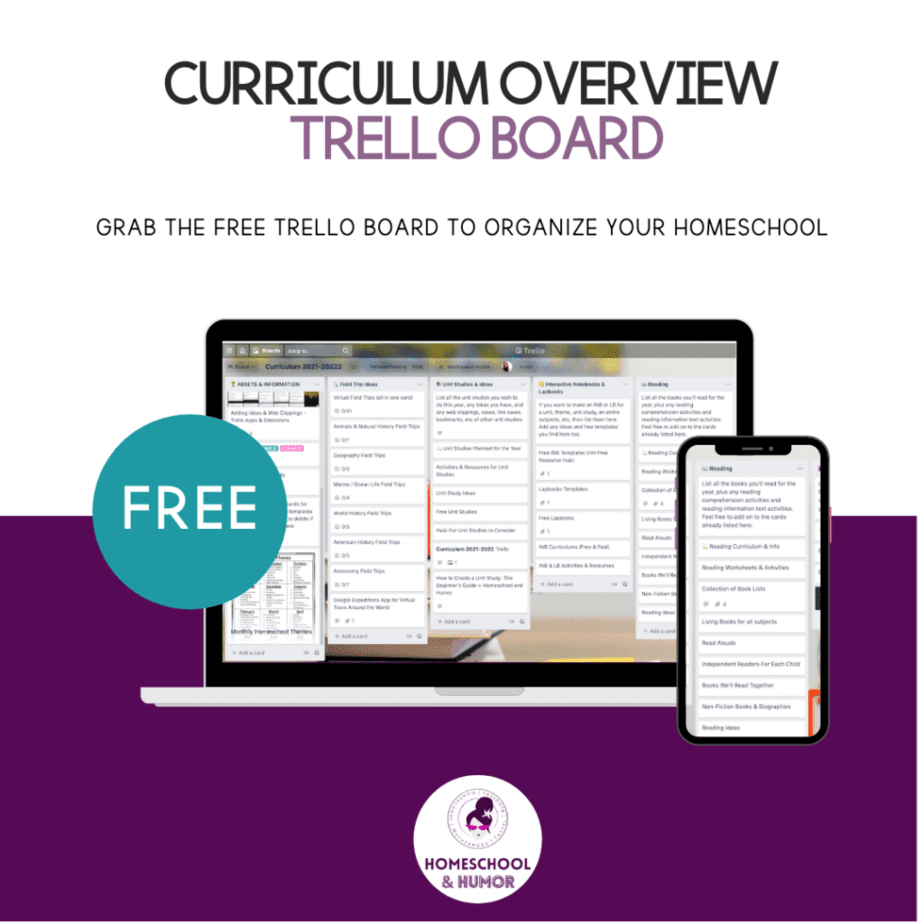
Or simply use regular notebook paper or a dedicated composition notebook. If you’re using a physical inventory tracker to keep track of your curriculum and books, make sure you also have a dedicated place for it.
5. Create a system for categorizing books.
There are a few ways you can sort your books and textbooks to get the full homeschool library organization. Do the one that fits best with your family dynamics and your own situation. Just be sure you put like with like.
You can:
- sort by subject or genre
- sort by grade level
- sort by company
- sort by child
- sort by type
- mix and match
Sort by subject or genre.
One way to organize your home library is to sort all of the materials by subject or genre. So, all the books on math would go together, all the books on science would go together, and so on. This will make it easy to find resources when you’re working on a particular lesson or subject.
You can group your home books by genre, such as “faith” or “Christian fiction” or “YA” or “Sci-Fi” and so on. You can group them as “read alouds” or “independent readers” or “read togethers” so you have quick access and all the books in one spot when you’re on to your next read aloud.
Sort by grade level.
You can take your homeschool books or curriculum and sort them by grade level.
One section would be “Family” or “Mom.” This means no age is needed.
Then you can group by grades PreK-12. This makes it easy if you have younger ones coming up in the years to come and you know you’re going to reuse them.
Sort by company.
You can sort your books by the company that created them in alphabetical order. So, Apologia’s would be first, Beautiful Feet would be next, and so on.
This is really only necessary if there’s a particular reason why you want to sort by company. Each family is different so this might be the perfect solution to yours, but it’s not the most common.
Sort by child.
This is similar to grade level, where it’s based on time, but it’s more for just the child. However, this would need to change every year or once or twice throughout the year since your child will move up in levels from one year to the next.
Sort by type.
You might want to group hands-on books/curriculums together if you have a lot of these. Maybe different books call for different activities, like copywriting, so you group the books or subjects that involve copywriting. This may be a good solution if you’re Charlotte Mason-based.
Do a mix of different ones.
You can easily mix up a few of these categorizing systems. For instance, sort by child only after you’ve sorted by a subject.
Or sort by child first, and then sort by subject. One child name will just be “Future Children!”
How we do it.
Here’s how to organize a homeschool library the way I do it. I have them organized by subject, but also have a mix. And I only organize by subject because we don’t have a dedicated place, like a homeschool room. We use our dining room. And so, I have a shelf and a storage bin for extra resources.
On the shelf, I have the books organized by subject so I can just easily grab the books when we move on to the next subject.
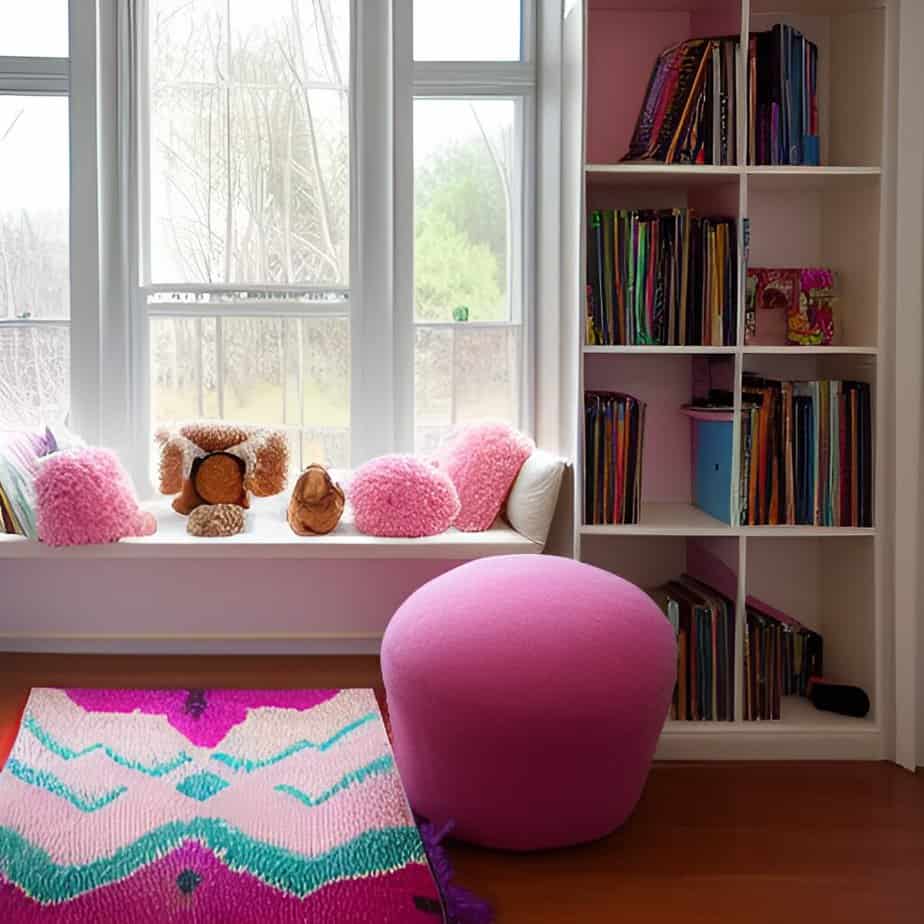
On the bottom shelf, I have one child’s books on there! So the top shelf are my 2 bigger kids, organized by subject. But the bottom shelf is my preschooler’s books – also organized by subject.
So you can put all the math materials together depending on how you homeschool the kids. Or you can put the materials together by child. Whatever makes it easiest!
6. Label the storage bins or boxes.
If you’re using bins on your shelves, of course, you’re going to want to label them accordingly. If you’re using storage bins for books you don’t need this year, you’ll DEFINITELY want to label those!
Labeling is a great way to keep your home library organized. You can label shelves, baskets, or even individual books. This will help you quickly find what you’re looking for.
Labeling the storage bins or boxes will help you to know exactly where each book is located. You can label them by subject or by grade level, especially if you decided to categorize your books the opposite way.
Now, this step is optional, but it can be helpful to label everything so you know exactly where everything is supposed to go. You can use sticky labels, chalkboard labels, or even just regular old duct tape and a Sharpie!
7. Put the textbooks in the appropriate bin or box.
Once you have sorted and labeled the storage bins or boxes, you can then start putting the textbooks in them. Make sure to put them in the correct bin or box so you can easily find them when you need them.
Again, this can be by child or by subject. Or by curriculum author. Whatever makes sense for your family.
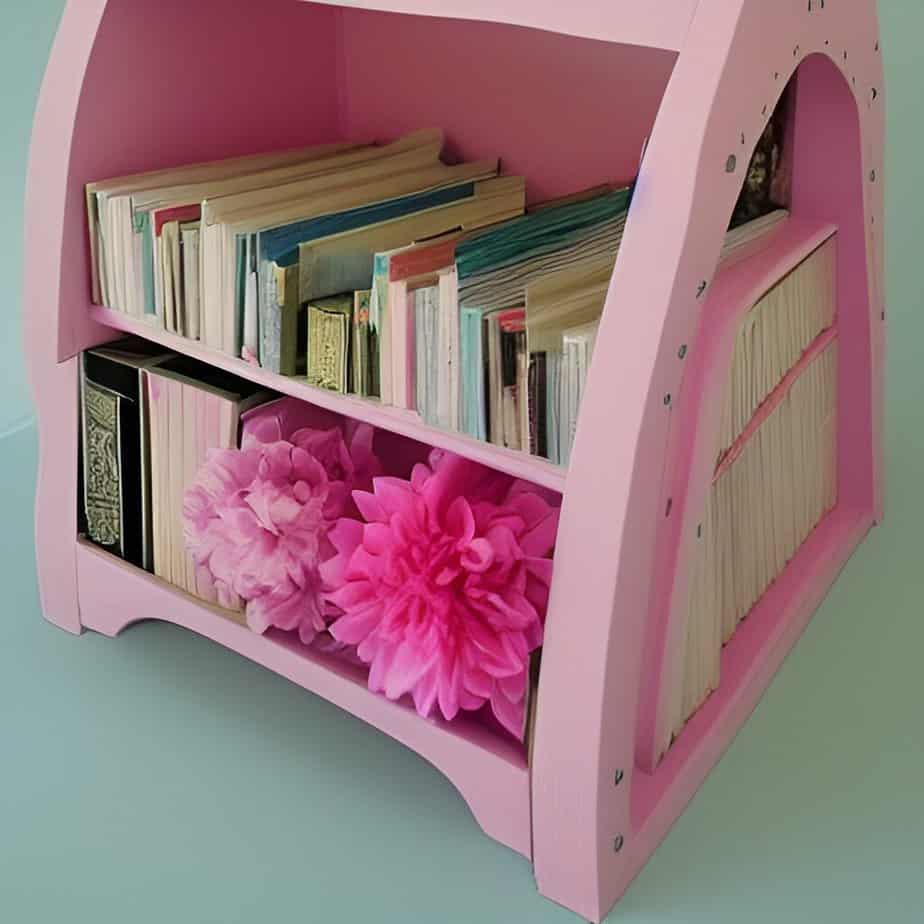
Maybe you have books you grab in the mornings times before lunch, and then books you grab in the afternoon times after lunch.
Or maybe you have certain books you only use for a morning basket or morning time routine.
It’s totally up to you and whatever is easiest for you. There’s no wrong way to do this!
8. Stack the storage bins or boxes in a convenient location.
Once all of the textbooks are sorted and stored, you will want to stack the storage bins or boxes in a convenient location. This could be in your homeschool room or in a closet near your homeschool room.
If the bins are part of your current year’s curriculum, put them on the shelves (if they’re small enough) or nearby in arm’s reach.
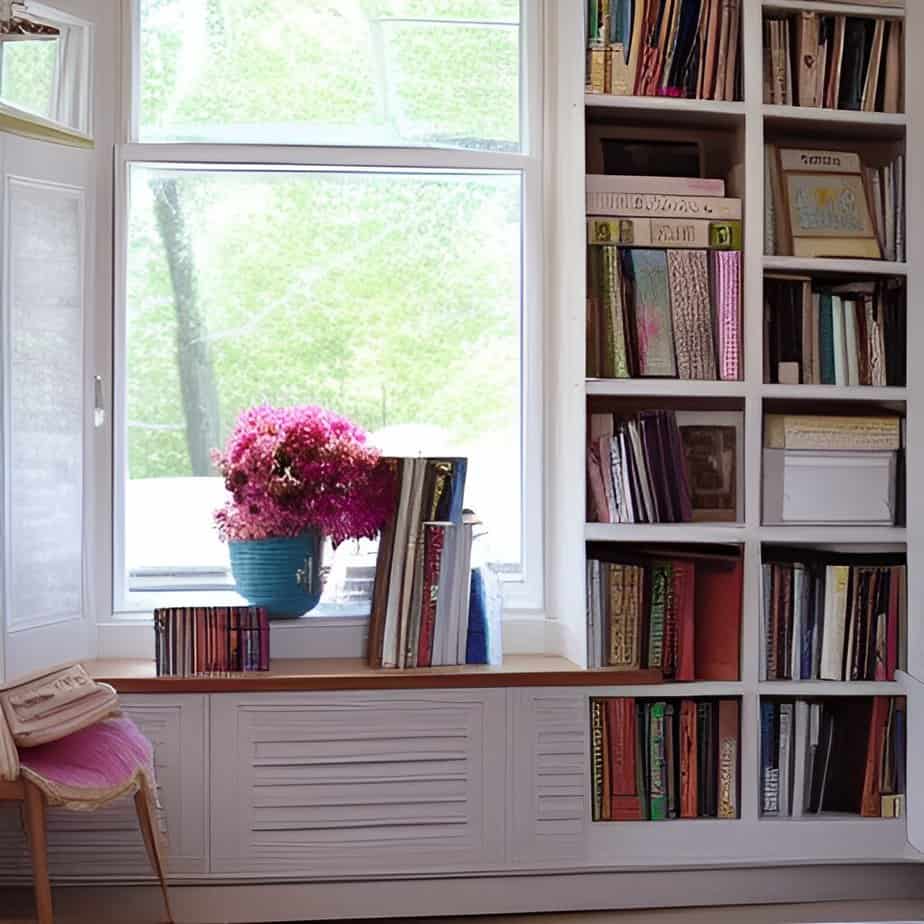
Currently, I’m using a big plastic bin for books I don’t need every day but that I do use a couple of times unknowingly throughout the month.
But if it’s books you just won’t be using this year, put those puppies away and outta sight! And make sure you’re really not just hanging onto them out of sentimentality. Other families are out there in need of books they can’t afford. And those prices? Yikes. So you will undoubtedly be doing your fellow homeschool mom a favor and a service by discounting your books (or giving for free) to her!
9. Keep it simple and tidy.
When you’re looking for ways on how to organize a homeschool library, make your process too easy to follow, quick to find, and simple to access. Once you’ve organized your home library with all your homeschool organization ideas, keep it organized and tidy.
After each day, put away materials you guys used from homeschooling lessons. You can stack books right next to you that you’re going to use for the day to start and then put them away after each subject or during each break.
Regularly dust or Pledge your bookshelves and area. Vacuum around it. Store your vacuum near your homeschool area so you can easily just grab the vacuum after each school day.
Better yet, assign this to one of your big kids to do! Put this on a chore list for them. Instead of doing chores before school starts, do chores after you’re finished with school – which is what we do. (Not the little, tidy tasks…that can be before your day begins. But the bigger tasks, like vacuuming, can be done after school ends.)

This will help you maintain an organized space and prolong the life of your materials and your sanity. Your stress from having things all over the place with be demolished. Your brain will be empty of all this clutter around you. And it helps to start a brand new school day when you’re already nice and ready for the day to begin, cleared of debris from the day before!
By following these tips, you can easily organize your home library and make homeschooling a breeze. With a little planning and effort, you can create a space that works for you and your family.
10. Enjoy your organized home library!
You have now successfully organized all of your homeschool textbooks into a home library! This will make it much easier to find the books you need when you are homeschooling and will help to keep your homeschool room more organized overall. With a little bit of planning and effort, you can easily create a space that works for you and your family!
How To Organize A Homeschool Library
A homeschool library is a vital resource for any family educating their children at home. By taking the time to organize your library, you will make it easier to find and use the resources available to you. I sure hope these homeschool organization ideas have provided you with some helpful tips on how to get started! And be sure to download our free homeschool library inventory sheet so that you can keep track of what resources you have and what you need.
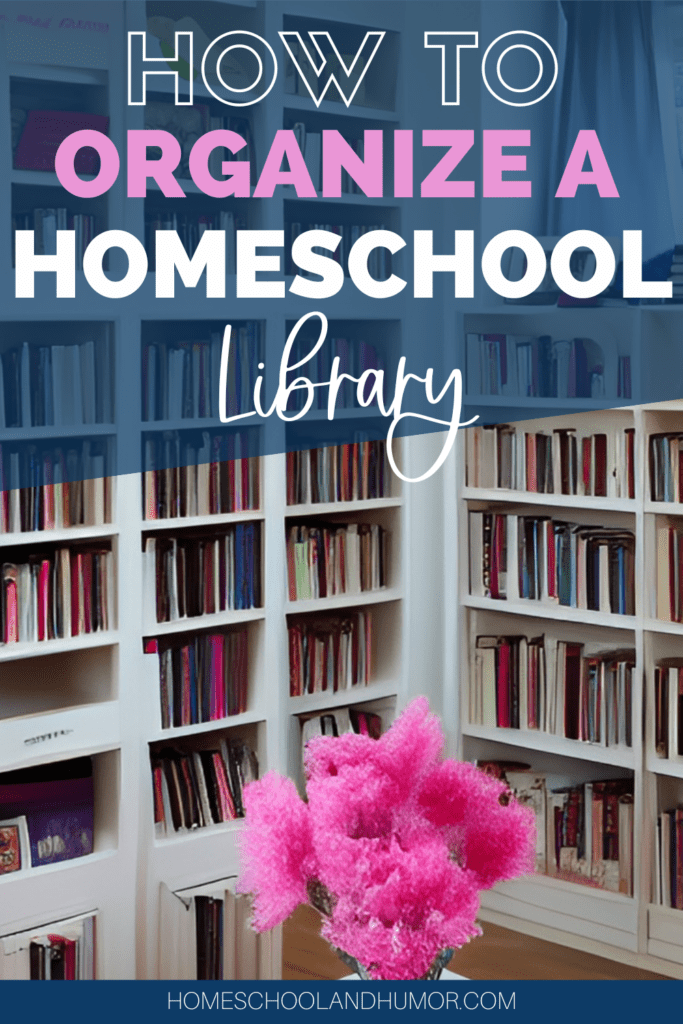
Back To Homeschool Giveaway!

- 55 Inspiring Mindfulness Quotes For Kids Every Mom Should Know - May 7, 2024
- 111 Best All-Time Middle School Movies List (In Categories!) - April 26, 2024
- Top 16 Indoor Games for Teens That Won’t Turn Your House into a War Zone - January 29, 2024

